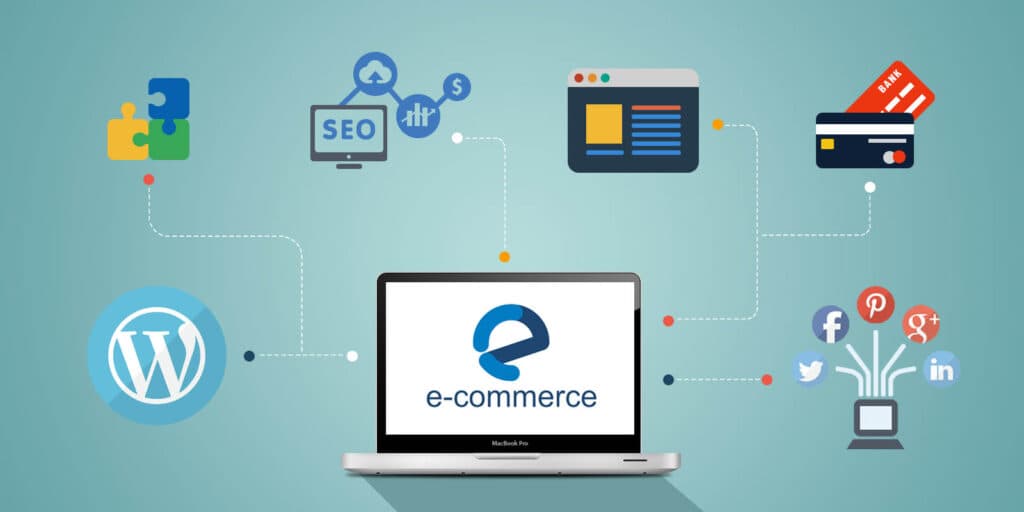
2020-02-12 • 7 min read
Why modern eCommerce matters: fast storefronts, secure payments, SEO-ready catalogs, and scalable architecture that converts visitors into repeat customers.
Overview
A modern eCommerce site is more than a catalog. It is a performance-optimized sales engine that blends brand, content, and conversion science to grow revenue.
Key Benefits
- Speed and UX: Fast, mobile-first pages reduce bounce and increase conversion. Use image optimization, caching, and a lightweight front end.
- Search visibility: Clean URLs, structured data, and semantic HTML help products rank in search and product feeds.
- Trust and security: PCI-compliant payments, 2FA for admins, and strong content moderation keep customers safe.
- Scalability: Headless and cloud-native stacks scale for seasonal traffic without replatforming.
- Personalization: Recommendations, recently viewed items, and targeted offers raise average order value.
Recommended Stack
- Storefront: Next.js or another modern framework for SSR/ISR.
- Back end: Headless commerce (Shopify, Medusa, CommerceTools) or a custom API.
- Payments: Stripe, Adyen, or Braintree with support for wallets and Buy Now Pay Later.
- Search: Algolia or Elasticsearch; add synonyms and typo-tolerance.
- Content: Headless CMS for landing pages and blog posts.
Conversion Playbook
1. Clear information architecture and filters.
2. High-quality images and video; zoom and 360 where relevant.
3. One-page checkout, guest checkout, and saved addresses.
4. Cart recovery emails and push notifications.
5. A/B test pricing, badges, and copy; measure with analytics.
Operations and Growth
Automate inventory sync, tax, and shipping rates. Add internationalization, multi-currency, and localized content. Monitor core web vitals and implement error tracking for a smooth experience.
Takeaways
Invest in speed, SEO, and checkout experience first. Pair a headless architecture with analytics and experimentation to keep improving conversion and lifetime value.
A modern eCommerce site is more than a catalog. It is a performance-optimized sales engine that blends brand, content, and conversion science to grow revenue.
Key Benefits
- Speed and UX: Fast, mobile-first pages reduce bounce and increase conversion. Use image optimization, caching, and a lightweight front end.
- Search visibility: Clean URLs, structured data, and semantic HTML help products rank in search and product feeds.
- Trust and security: PCI-compliant payments, 2FA for admins, and strong content moderation keep customers safe.
- Scalability: Headless and cloud-native stacks scale for seasonal traffic without replatforming.
- Personalization: Recommendations, recently viewed items, and targeted offers raise average order value.
Recommended Stack
- Storefront: Next.js or another modern framework for SSR/ISR.
- Back end: Headless commerce (Shopify, Medusa, CommerceTools) or a custom API.
- Payments: Stripe, Adyen, or Braintree with support for wallets and Buy Now Pay Later.
- Search: Algolia or Elasticsearch; add synonyms and typo-tolerance.
- Content: Headless CMS for landing pages and blog posts.
Conversion Playbook
1. Clear information architecture and filters.
2. High-quality images and video; zoom and 360 where relevant.
3. One-page checkout, guest checkout, and saved addresses.
4. Cart recovery emails and push notifications.
5. A/B test pricing, badges, and copy; measure with analytics.
Operations and Growth
Automate inventory sync, tax, and shipping rates. Add internationalization, multi-currency, and localized content. Monitor core web vitals and implement error tracking for a smooth experience.
Takeaways
Invest in speed, SEO, and checkout experience first. Pair a headless architecture with analytics and experimentation to keep improving conversion and lifetime value.
